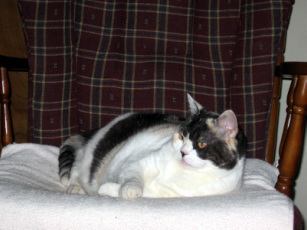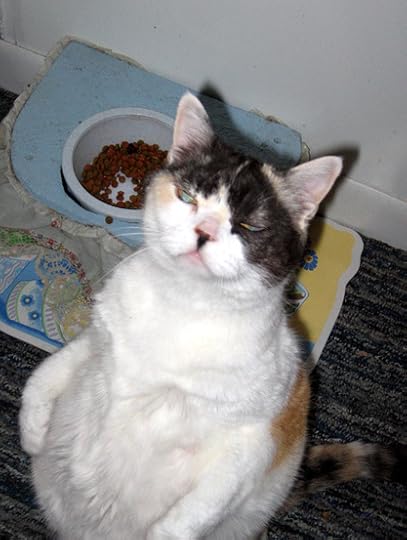Scottish Fold - a Unique Breed of Cat!
 My parents recently visited from Montana, and we talked a lot about our pets, including those we lost in recent years. My parents have a wonderful little cat but the one who continues to linger in their hearts was named JJ, a part-Scottish Fold they adopted from a regional animal shelter. JJ caused my dad to really warm up to cats – Scottish Folds often make a positive impact on people.
My parents recently visited from Montana, and we talked a lot about our pets, including those we lost in recent years. My parents have a wonderful little cat but the one who continues to linger in their hearts was named JJ, a part-Scottish Fold they adopted from a regional animal shelter. JJ caused my dad to really warm up to cats – Scottish Folds often make a positive impact on people.From its origins in Scotland to homes across the ocean, the Scottish Fold cat appeals to the hearts of cat lovers around the world. This breed, with its unique owl-like look, was accepted by The Cat Fanciers' Association (CFA) in 1978.
What gives this breed of cat its unique appearance is the folded ears, round eyes, and chubby cheeks. The bending, or folding, of ears forward and downward on the head is not a trait of all Scottish folds, however, in those with that characteristic, the fold is due to a gene characteristic creating an ear cartilage defect. All Scottish Fold kittens are born with straight ears; usually by three weeks of age, the fold will appear … if it's going to.
The breed was developed by a man named William Ross who, in 1961, found the first known Scottish Fold at farm northwest of Dundee, Scotland. The white barn cat was named Susie, and Ross took one of her kittens home and proceeded to develop the breed through introductions with British Shorthairs and other cats. Scottish Folds come in all colors and patterns, and their thick coat can be long-haired or short-haired. They require regular grooming due to the denseness of their coat.
Scottish Folds make wonderful pets. They possess a sweet, loving disposition and generally adapt to any home environment, making them good for single people, older couples, or families. They are known to get along with children and other pets, including dogs and other cats. Scottish Folds are hardy, like their barn cat ancestors. They are also inquisitive and many sit up like prairie dogs or meerkats to have a look around. They can even sit back on their haunches, having a Buddha-like appearance with their round bodies.
JJ often did those poses, one of many ways, I believed, she tugged at my dad's heart. JJ had been living at the shelter for nearly two years and seemed aloof toward anyone who would seek her out, so she became the shelter cat, roaming free in the building. She accepted her caregivers but didn't seem interested in potential adopters who were seeking a furry friend. On the day of my parents' visit, however, that changed – JJ jumped up on the counter, walked straight to my father, and rubbed against his arm. That sealed the deal! JJ lived with my parents until her passing 10 years later. She possessed several characteristics of the Scottish Fold breed, including the round face and body. Although her ears were not folded, she also had a loving demeanor and that meerkat-like stance of her breed. She was a bit shy with strangers, and she wasn't terribly fond of my dogs when we'd visit, but she tolerated them. I think JJ liked being queen of the castle, and she was a wonderful companion for both mom and dad.
Although Scottish Folds can be show cats and are raised by breeders, they can also be found in shelters and rescues throughout the country. Just as my parents found their special Scottish Fold friend at a local shelter, if you are thinking this could be the right breed of cat for you, look to adopt your new friend through a shelter or rescue.
Learn more about Scottish Fold cats at http://www.petfinder.com/cat-breeds/Scottish-Fold
and http://www.catster.com/cat-breeds/Scottish_Fold . You can also view a video from Animal Planet's Cats 101 about the breed: http://www.animalplanet.com/tv-shows/cats-101/videos/scottish-fold.htm .

Published on July 31, 2014 18:11
No comments have been added yet.



